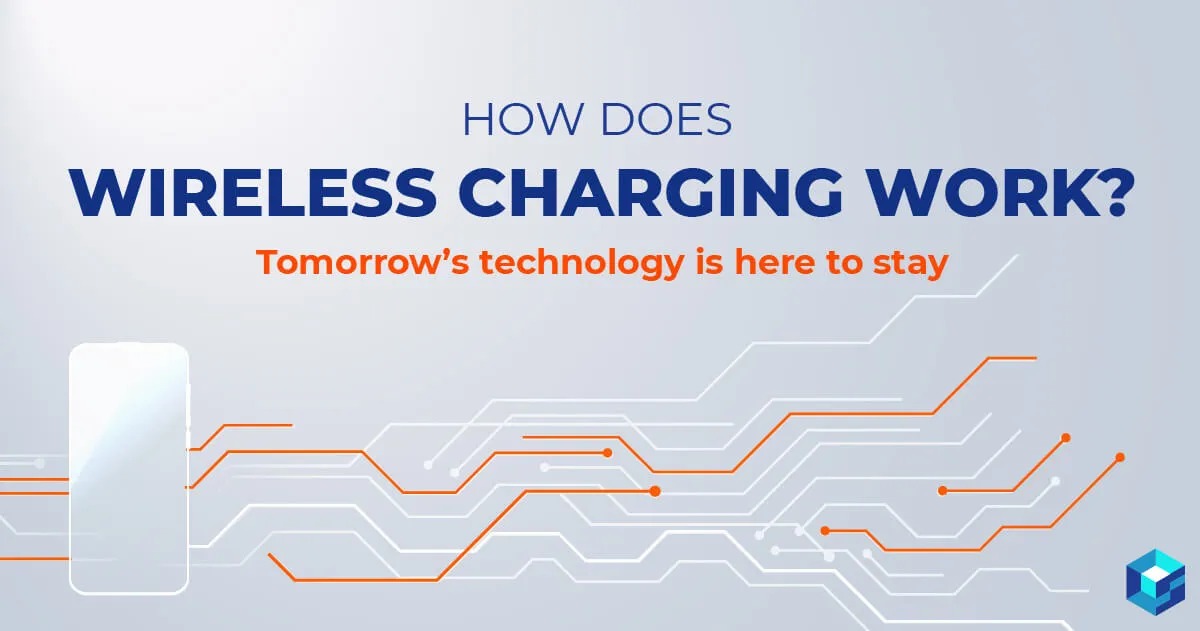
"Editor's Note: This blog was originally published on October 22, 2019 but it has been updated for accuracy and relevance"
The glorious, sci-fi-inspired world of tomorrow we were promised isn’t here yet. No lightning-fast flying cars exist, and the ability to teleport people is still way off – at least for now.
However, one futuristic technology that was hard to imagine less than a generation ago has definitely arrived, and its future is even more promising: wireless charging.
While it might not have the wow factor of flying automobiles, if you think about it, wireless charging went from “tomorrow’s technology” to a present-day powerhouse in less time than expected.
Let’s take a look at the basics behind wireless technology, some recent trends in the field, associated electronic components, and its immediate and long-term growth prospects. We will cover how the global chip shortage will not halt its evolution and growing international popularity.
Wireless Technology 101
So, how exactly does wireless charging technology work? Let’s take one of the most common consumer products – a smartphone – to illustrate the basics of wireless charging. The process is enabled through energy transfer (just like regular wired charging), but the key difference is a process known as electromagnetic induction.
The wireless charger utilizes an induction coil, which generates a magnetic field. This magnetic field transfers energy (without wires) between the induction coil and another coil in the smartphone. The phone takes this shared electricity (power) through the electromagnetic field, converts the power to electric current, and uses it to charge up.
In the wireless charging process, think of the electromagnetic field as the wires, and the induction coil as the power brick. In both wired and wireless charging, a transfer of energy occurs. The technology, electronic components, and devices used to create this energy transfer drastically differ between the two types of charging. A specialized technology called the Qi wireless charging standard establishes operating protocols for wireless smartphone charging.
When the technology first emerged in the early 2010s, the sheer distance between the charging device and the target accessory was a major performance factor. This distance impacted wireless charging speed, efficiency, and reliability. But thanks to an advanced process called resonant inductive coupling, the acceptable distance between devices is expanding every day.
Consumer Trends and Tidbits: Wireless Charging Developments, Benefits of Wireless Charging and More
What should consumers and electronic parts buyers expect from the future of wireless charging technology? Apple helped mainstream the technology by debuting its MagSafe wireless charging standard in 2020. The corporation introduced 1 billion iPhone owners to a seamless mobile device and accessory recharging experience.
Plus, the world embraced wearable devices like smartwatches and fitness trackers in response to the coronavirus pandemic. And the best-selling wearables came packaged with wireless chargers.
Some companies like Ossia aren’t stopping at small electronic devices; their goal is to completely replace wired charging altogether. Bluetooth-inspired technology and Wi-Fi radiofrequency networking systems will enable Ossia to wirelessly charge industrial and business equipment, accessories, and other devices.
The capability is limited for now – wireless charging distance is about 3 feet, per U.S. Federal Communications Commission (FCC) guidelines – but the technology should pave the way for exciting developments in the next few years.
For consumers reluctant to shed those wires for charging, consider just one big advantage: device integrity and durability. Traditional wired charging requires wall sockets, connectors, and other literal openings for dust, dirt, water, and other foreign particles. Wireless charging allows enhanced protection, thanks to a completely closed and secure device design.
And if you think wireless charging is a fad or a fleeting technology, think again. Wireless charging’s primary predecessor, traditional inductive charging, has been around since the late 20th century. Personal hygiene products (hand-held hair trimmers, electric toothbrushes, etc.) used inductive charging and are now part of everyday life.
Wireless charging is far from a fad – it’s here to stay.
Wireless-Charging Component Parts Procurement Issues? Sourcengine Can Help
According to IHS, more than 6 billion wireless power receivers will enter production in the next five years. If your company is looking for a better way to procure electronic components and other accessories for wireless charging development, Sourcengine can help.
Much like wireless charging technology itself, our e-commerce marketplace is a true disruptor in the semiconductor industry. Our streamlined online ordering interface is specifically designed to help your sourcing professionals leverage the latest technology to save time and money – and, ultimately, boost your bottom line.
Sourcengine can also assist OEMs, CMs, and EMS providers in navigating the contemporary electronic components supply chain. Our digital tools, logistics network, and procurement teams have helped our customers keep their production lines running, even amid rising geopolitical tensions and unprecedented industry volatility.
Thanks to the Internet of Things (IoT) and other wireless-dependent accessories, the demand for wireless charging isn’t slowing down. Is your business prepared to address the challenges of the increasingly complex consumer and commercial markets?
Sourcengine specializes in helping electronics manufacturers, regardless of location, reach the next level. Join our marketplace today for free to start your company’s digital transformation.

Quotengine: Your Ultimate BOM Tool

What’s Your Excess Worth?

The Last Integration You’ll Ever Need

Sourcengine’s Lead Time Report

Sourcengine’s Lead Time Report
Your Lead Time Overview
Subscribe HereStruggling with excess inventory?
Download your free copy!.png)


.svg)

.svg)